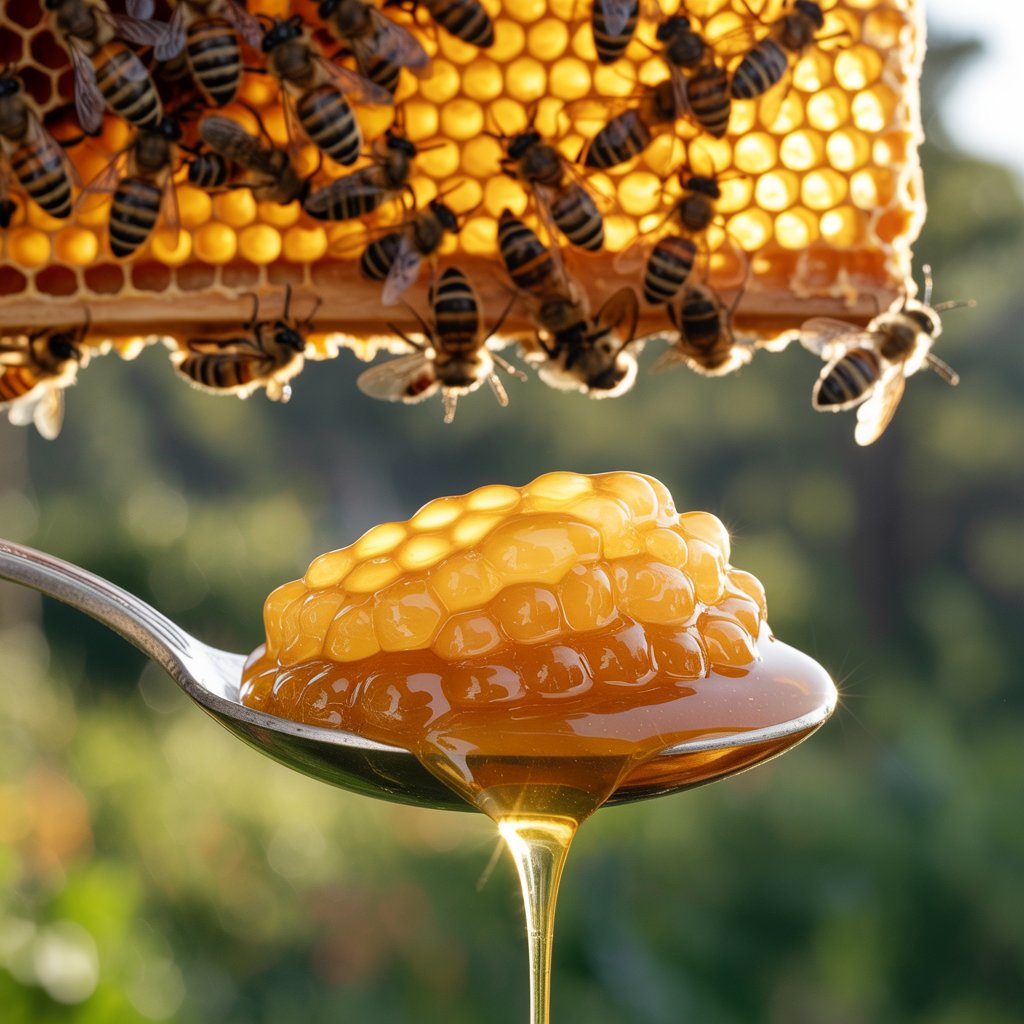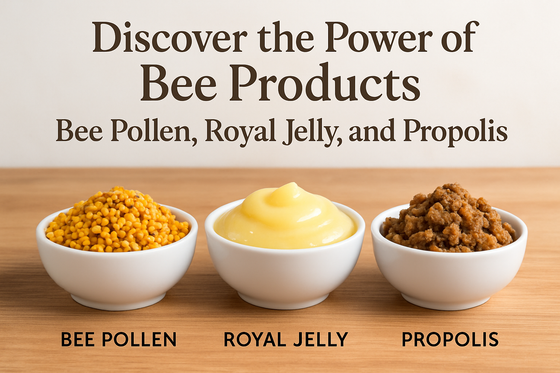
When it comes to bee products, honey is a household staple — drizzled on pancakes, stirred into tea, or used as a natural remedy for coughs. But there's another lesser-known gem straight from the hive: royal jelly. Known for nourishing the queen bee and packed with unique nutrients, royal jelly has gained popularity as a superfood and natural supplement.
Though both honey and royal jelly come from bees, their origin, nutritional value, usage, and benefits differ significantly. If you're exploring natural health products or trying to decide which one to incorporate into your lifestyle, this guide breaks it down for you.
Royal jelly is a thick, milky-white substance secreted by nurse bees (young worker bees) and is used to feed all larvae in the hive for the first few days of life. However, the real magic happens when one larva is exclusively fed royal jelly — this larva becomes the queen bee.
It’s not just bee magic; it’s nutritional science. Royal jelly contains a potent mix of:
Water (60–70%)
Proteins and peptides
Fatty acids (like 10-HDA – a unique acid found only in royal jelly)
Natural sugars (glucose and fructose)
B-vitamins (especially B5 and B6)
Trace minerals, enzymes, and polyphenols
Because of this unique composition, royal jelly is considered a functional food with potential benefits like:
Supporting immune health
Helping with hormonal balance and fertility
Promoting skin regeneration and anti-aging
Enhancing energy and vitality
However, it's often consumed in small doses — either as a supplement (capsules, freeze-dried powder) or raw in refrigerated form.
Honey is made when bees collect nectar from flowers, which they then enzymatically convert and store in the hive’s honeycombs. It’s used by the bees as their main food source, especially during colder months when flowers are scarce.
Honey’s nutritional profile includes:
Natural sugars (mainly fructose and glucose)
Antioxidants (like flavonoids and phenolic acids)
Enzymes (like glucose oxidase)
Trace vitamins and minerals
People use honey for a variety of reasons:
A natural sweetener and sugar substitute
An effective remedy for coughs and sore throats
A topical treatment for minor wounds and burns
A gentle skin moisturizer when used in masks
Honey is more than just a kitchen ingredient — it’s been used for centuries in traditional medicine systems like Ayurveda and Traditional Chinese Medicine.
| Aspect | Royal Jelly | Honey |
| Origin | Secreted by nurse bees | Made from flower nectar |
| Purpose in Hive | Nourishes the queen bee | Food for the hive |
| Appearance | Milky white, thick, creamy | Amber-gold, viscous syrup |
| Taste | Slightly bitter, tangy | Sweet, floral |
| Shelf Life | Short (refrigerated when fresh) | Long (stable at room temperature) |
| Nutrient Focus | Proteins, vitamins, fatty acids, 10-HDA | Natural sugars, antioxidants, enzymes |
| Health Benefits | Energy, immunity, hormones, anti-aging | Energy, digestion, wound healing, skincare |
| Availability | Limited, often expensive | Widely available and affordable |
| Form | Raw, capsule, powder, skincare infused | Raw, filtered, creamed, infused |
It really depends on your health goals and how you plan to use the product.
Want to support hormonal health, especially during menopause or fertility treatment.
Are looking for a nutrient-dense supplement to boost immunity and vitality.
Are targeting anti-aging effects for your skin or overall wellness.
Can invest in a high-quality supplement for a short-term boost or long-term benefit.
Need a natural sweetener with antioxidant properties.
Prefer an easy addition to everyday meals and drinks.
Want a remedy for coughs, sore throats, or mild wounds.
Are looking for a budget-friendly, accessible superfood.
Both products can also complement each other. For instance, you might take a teaspoon of royal jelly in the morning for energy and use honey in your tea at night for relaxation.
Yes — while both are natural, they’re not suitable for everyone.
Allergic reactions can occur, especially if you’re allergic to bee products or pollen.
Royal jelly has a higher chance of causing allergic responses like skin rashes, asthma, or even anaphylaxis in rare cases.
Honey should never be given to children under 1 year old due to the risk of botulism.
People with diabetes should monitor their intake of both due to the sugar content (especially in honey).
Always check with your healthcare provider before starting new supplements.
If you’re ready to try either, make sure you:
Choose raw and organic honey to avoid added sugars.
For royal jelly, look for freeze-dried or fresh forms stored in a refrigerator to preserve its potency.
Read labels carefully for purity, origin, and third-party certifications.
Shop Our Royal Jelly & Organic Honey Collection here
Comments will be approved before showing up.

Propolis is a resinous mixture produced by honey bees when they collect sap from trees and mix it with beeswax and enzymes. The result: nature’s own protective compound, used by bees to seal their hive and guard against bacteria, fungi, and weather.
Because of its rich composition of polyphenols, flavonoids, and antimicrobial compounds, propolis is now valued as a “bee-made immunity booster” and “ wellness ally.” PMC+2PMC+2

Let’s get real about honey bees for a second: These little guys are basically the world’s MVPs. You think they buzz around making honey for your toast? Bees: The Real Foodies’ Wingmen, Here’s the serious bit: When bees start dropping off, it’s a big red flag for the environment. They’re like those canaries in the coal mine—if they’re not okay, odds are, we’re messing something up (pesticides, climate, you know the drill). Saving the bees isn’t just about saving honey; it’s about keeping our own butts.

Bee Pollen vs. Royal Jelly vs. Propolis: There are numerous bee products available, so let’s take a moment to examine the differences between bee pollen, royal jelly, and propolis.
Bee products have been revered for thousands of years, trans-culturally, for nourishment, healing, and well-being. Today, they are being rediscovered as natural superfoods. Three of the most popular treasures of the hive are bee pollen, royal jelly, and propolis. They’re often combined, but each is also quite distinct in its origins, components and health benefits. Appreciating these differences can help you make the most of what nature’s hardest workers offer.